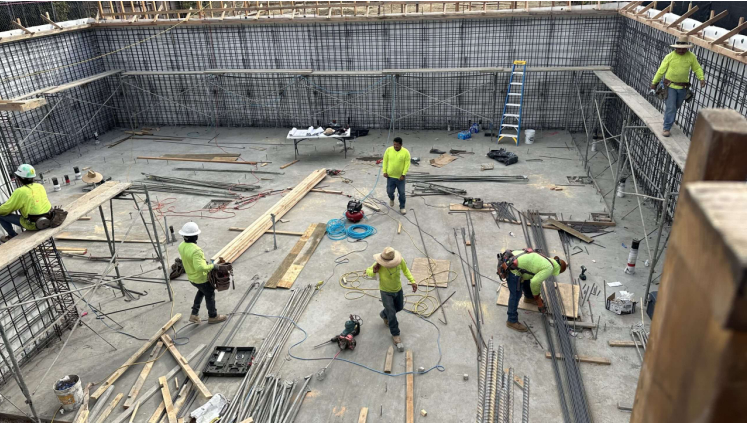Water damage is one of the most costly and disruptive issues a homeowner can face, especially when it comes to the basement and foundation of a home. Without proper waterproofing, water can seep into your home, causing structural damage, mold growth, and costly repairs. This article will guide you through some essential basement and foundation waterproofing tips to help keep your home dry and safe.
Why Basement Waterproofing Matters
A basement is the lowest point of your home, making it the most vulnerable area to water infiltration. When rainwater or groundwater accumulates around your home, it can seep through cracks in the walls and floors, leading to significant damage. Basement waterproofing is crucial because it prevents moisture from entering the basement, protecting your home from water damage, mold growth, and even foundation issues. A dry basement also contributes to better indoor air quality and improved living conditions.
Common Causes of Water Problems in Basements
Several factors can lead to water issues in basements. One of the most common culprits is poor drainage around the foundation. When water doesn’t drain properly away from your home, it can pool around the foundation and find its way into the basement through cracks or other weak points. Additionally, clogged gutters, foundation settling, and soil erosion can all contribute to moisture problems in the basement. Understanding the cause of water infiltration is the first step in choosing the right waterproofing solution.
Foundation Waterproofing: A Key to Structural Integrity
Foundation waterproofing is just as important as basement waterproofing. The foundation is the backbone of your home, and if water begins to penetrate it, you risk undermining the entire structure. Water intrusion into the foundation can lead to cracks, shifting, and settling, which could compromise the integrity of your home. By investing in foundation waterproofing, you are protecting your home from long-term damage, which can be expensive to repair. Foundation waterproofing involves sealing the exterior and interior of the foundation to keep moisture out, preventing water from affecting the structural elements.
Methods of Basement Waterproofing
There are several methods of basement waterproofing, and the right choice depends on the severity of the problem. Some of the most common techniques include:
- Interior Drainage Systems:This involves installing a drainage system inside the basement to collect and redirect water to a sump pump. It’s a less invasive method but effective in preventing water accumulation.
- Exterior Waterproofing:This method involves applying a waterproof membrane or coating to the exterior of the foundation walls. It creates a barrier that prevents water from entering the basement.
- Sealants and Waterproof Paints:Using sealants or waterproof paint on walls and floors is a less expensive solution for minor water issues. These products prevent moisture from penetrating the surface.
- Sump Pumps and French Drains:Installing a sump pump and French drain system helps to direct water away from the foundation, preventing pooling around the basement walls.
Each of these methods can be effective depending on the level of water intrusion and the layout of your home.
How to Detect Basement Water Issues
Before you can waterproof your basement, you need to identify the signs of water damage. Look for:
- Damp or musty odors
- Water stains on walls and floors
- Visible mold or mildew growth
- Cracks in foundation walls
- Puddles or standing water in the basement
If you notice any of these signs, it’s essential to address the issue as soon as possible to prevent further damage. Regular inspections and addressing minor problems early can save you from costly repairs down the road.
Preventative Measures for Basement and Foundation Waterproofing
Preventing water damage before it occurs is the best way to protect your home. Here are some tips to help keep your basement dry:
- Maintain Proper Drainage:Ensure that your gutters are clean and downspouts are directed away from the foundation. This helps prevent water from pooling around your basement.
- Grade the Soil Away from Your Home:The soil around your home should slope away from the foundation to prevent water from collecting around the basement.
- Seal Cracks in the Foundation:Regularly inspect your foundation for cracks, and seal any small ones with waterproof caulk or sealant.
- Install a Dehumidifier:If your basement tends to be humid, consider using a dehumidifier to reduce moisture levels.
When to Call a Professional
While some basement waterproofing tasks are DIY-friendly, others require professional assistance. If you’re dealing with significant water issues or a compromised foundation, it’s best to consult with a professional waterproofing contractor. They can assess the situation, recommend the best solution, and ensure that your basement and foundation are properly protected.
Conclusion
Basement and foundation waterproofing are essential steps to safeguarding your home against water damage. By addressing potential water issues early, you can avoid costly repairs and ensure the long-term structural integrity of your home. If you’re looking for expert waterproofing services, visit waterproofingnroofing.com for more information and professional help. Taking proactive measures now can save you from bigger problems down the line.

